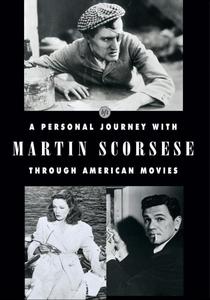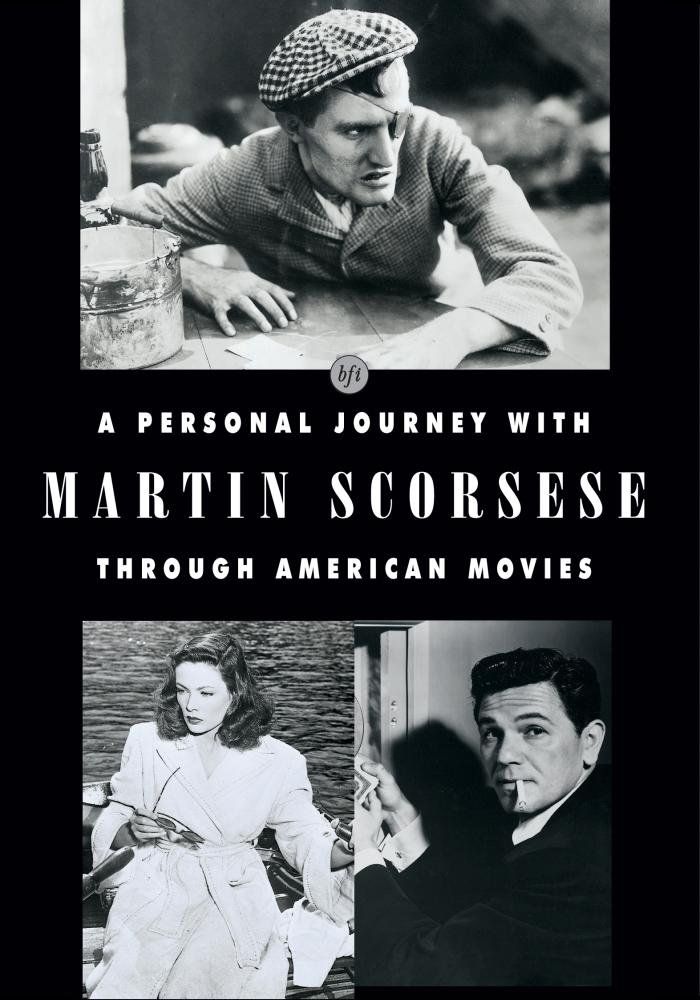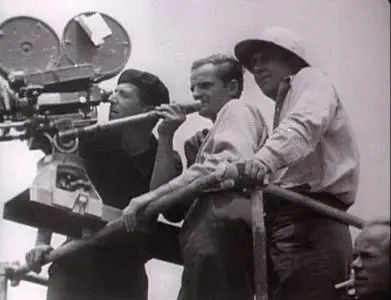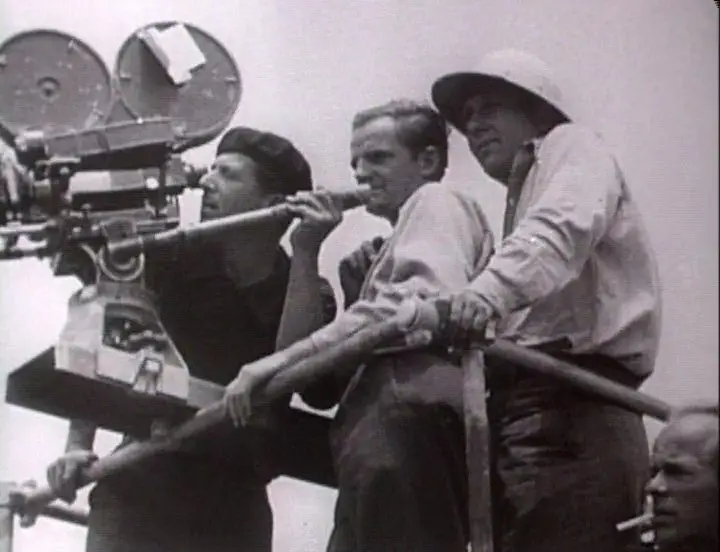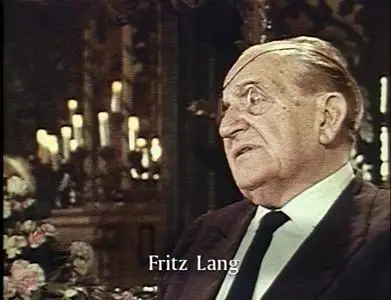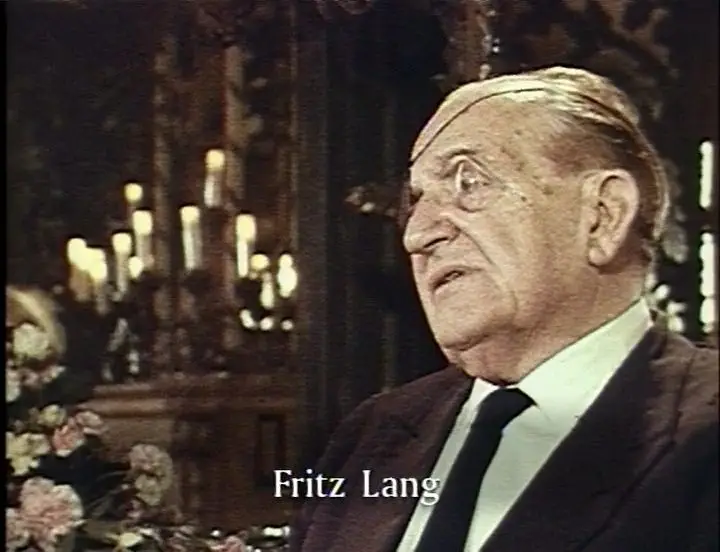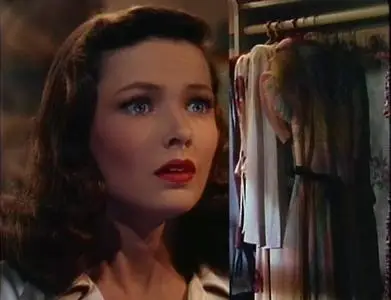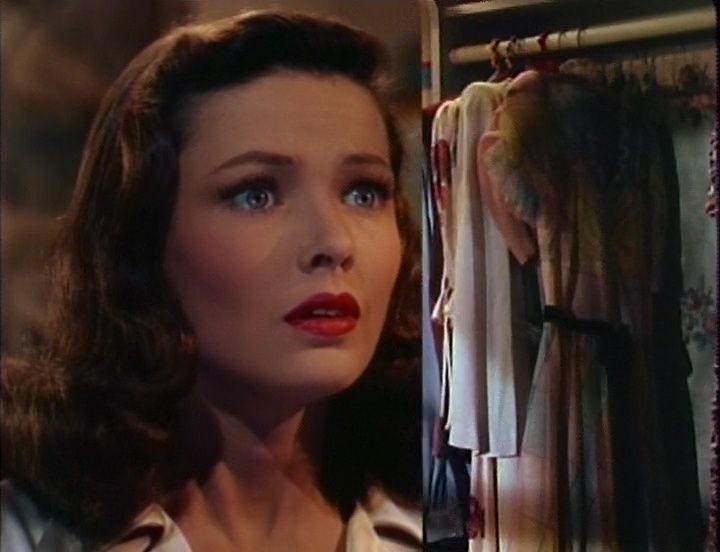BFI - A Personal Journey with Martin Scorsese Through American Movies (1995)
DVDRip | 720 x 552 | .MKV/AVC @ 2211 Kbps | 3x~72mn | 3.87 GB
Audio: English AC-3 192 Kbps, 2 channels | Subs: English
Genre: Documentary
DVDRip | 720 x 552 | .MKV/AVC @ 2211 Kbps | 3x~72mn | 3.87 GB
Audio: English AC-3 192 Kbps, 2 channels | Subs: English
Genre: Documentary
This is Martin Scorsese's contribution to the British Film Institute's "Century of Cinema" series. In 1994, the British Film Institute commissioned a set of films to mark the centenary of the movies. They would trace the history of several national cinemas, and the BFI's choice for interpreting the history of American film fell to director Martin Scorsese, a longtime champion of film history and preservation.
Martin Scorsese, perhaps the most ardent cinephile of all the great film directors, has produced a masterly account of all the world's largest and most powerful film industry. Scorsese's love affair with the cinema began in his chidhood, and his passion for the medium and its history makes him a compelling guide. The documentary offers a fresh look at the kind of pictures he grew up loving and found inspirational: westerns, crime movies, biblical epics.
At over three and a half hours, the programme is a treasury of movie moments, all lovingly presented in their original screen ratios. This vastly entertaining, strong-willed documentary has no room for pompous artistes or stuffy academics. It does have plenty of space for the B movies that Hollywood raised to the level of art.
Jacques Tourneur's 1942 film "Cat People" is covered, having monsters that were no more than shadows (the budget was that low), a beautiful heroine with unspoken psychosexual fears (movies were that circumspect) and an enduring impact on American horror films, which are often deeper than they seem. "Force of Evil," a 1940s gangster picture, demonstrates Scorsese's most pointed opinion: that genres are infinitely pliable, able to explore emotional and moral depths in the guise of gripping entertainment.
Classics of the silent era ("Intolerance", "The Crowd") are here, as are examples from the major American genres: Westerns (from The "Searchers" to "Unforgiven"), Musicals (Busby Berkeley to "All That Jazz") and gangster films ("Public Enemy" to "Point Blank"), along with such mold-breaking masterpieces as "Sunrise", "Citizen Kane", and "2001 - A Space Odyssey."
Scorsese's personal journey will delight, inform and entertain not only film buffs, but also anyone who has ever sat in a darkened cinema, spellbound by the silver screen before them.
A Film by Martin Scorsese and Michael Henry Wilson; A BFI TV production for Channel 4 in association with Miramax Films and the Museum of Modern Art New York
Part 1:
Chapter 1 - THE DIRECTOR'S DILEMMA: MASTERING THE CREATIVE PROCESS
Martin Scorsese penetrates the industry's perennial conflict between Art and Commerce by examining the dynamic between the director's vision and the producers "bottom line."
In chapter "The Director's Dilemma," Scorsese ruminates on the eternal struggle between art and commerce, with clips from THE BAD AND THE BEAUTIFUL (1952), and explains how some directors circumvented the studio system by adopting the philosophy of "making one for them and one for yourself." The producer's omnipotent role in the old Hollywood is examined by focusing on David O. Selznick.
Chapter 2 - THE DIRECTOR AS STORYTELLER: THE WESTERN, THE GANGSTER FILM, THE MUSICAL
Critical attention is paid for the primary role of the director–that of the consummate storyteller. Here, Mr. Scorsese offers a wealth of extracts from film's greatest genres.
In "The Director as Storyteller," Scorsese looks at three classic American genres: westerns, gangster films, and musicals. Westerns are covered with the films of John Ford, Anthony Mann, and others, while gangster films are represented by a variety of titles, including SCARFACE (1932) and FORCE OF EVIL (1948). Musicals are discussed in terms of having dark subtexts, as shown with clips from Busby Berkeley's depression-era production numbers and MEET ME IN ST. LOUIS (1944).
Part 2:
Chapter 1 - THE DIRECTOR AS ILLUSIONIST: CONTROLLING AND MASTERING THE TECHNICAL PROCESS
Martin Scorsese explores the director's constant search for technological solutions to tell his story, to implement his vision - from silents to sound, from black and white to Technicolor, from standard screen size to CinamaScope.
"The Director as Illusionist" deals with film technology and cinematic grammar as it was developed in silent films by such pioneers as D.W. Griffith, King Vidor, Raoul Walsh, Cecil B. De Mille, F.W. Murnau, and Frank Borzage. Other subjects covered include the talkie revolution, mobile camerawork, three-strip Technicolor, CinemaScope, epic films, special effects, and modern computer technology.
Chapter 2 - THE DIRECTOR AS SMUGGLER: THE METAPHOR BEHIND THE VISION
Moving effortlessly between cult favourites and acclaimed masterpieces, Martin Scorsese celebrates the director's surreptitious route to hide his personal message within the framework of a film.
"The Director as Smuggler" is devoted to the makers of mostly B-movies who managed to find cracks in the system and smuggle in radical ideas of a political, social, or personal nature. Directors discussed include Jacques Tourneur, Joseph H. Lewis, Andre De Toth, Ida Lupino, Edgar G. Ulmer, Anthony Mann, Robert Aldrich, Allan Dwan, Douglas Sirk, Nicholas Ray, and Samuel Fuller.
Part 3:
THE DIRECTOR AS ICONOCLAST: ASSERTING PERSONAL EXPRESSION
Here, Martin Scorsese champions the mold-breakers - those who dared to attack conventional filmmaking head on, defiamtly sending shock waves throughout the industry, and ultimately expanding the art form.
"The iconoclasts", who ignored economic and thematic conventions, and whose careers were often hobbled as a result. We see the early glories — and eventual ruinous ends — of D.W. Griffith ("Broken Blossoms"), Erich von Stroheim ("The Wedding March"), and Orson Welles, whose "The Magnificent Ambersons," the follow-up to "Citizen Kane," was dismembered by the RKO studio — along with his reputation.
"The Director as Iconoclast" focuses on Erich von Stroheim, Orson Welles and other mavericks who clashed with the system and invariably lost. Post-WWII directors who fought the production code by dealing with adult material are also examined, including Elia Kazan, Otto Preminger, and Billy Wilder, whose battles led to the breakthrough work of such 1960s directors as Arthur Penn, Stanley Kubrick and John Cassavetes.
General
Unique ID : 119974447077572111577343646146975777870 (0x5A423CEECCD0E676207635D8AAB0444E)
Complete name :A.Personal.Journey.with.Martin.Scorsese.Through.American.Movies.mkv
Format : Matroska
Format version : Version 4 / Version 2
File size : 1.22 GiB
Duration : 1 h 12 min
Overall bit rate : 2 408 kb/s
Encoded date : UTC 2021-07-14 19:03:14
Writing application : mkvmerge v59.0.0 ('Shining Star') 64-bit
Writing library : libebml v1.4.2 + libmatroska v1.6.4
Video
ID : 1
Format : AVC
Format/Info : Advanced Video Codec
Format profile : High@L4
Format settings : CABAC / 12 Ref Frames
Format settings, CABAC : Yes
Format settings, RefFrames : 12 frames
Codec ID : V_MPEG4/ISO/AVC
Duration : 1 h 12 min
Bit rate : 2 211 kb/s
Width : 720 pixels
Height : 552 pixels
Display aspect ratio : 4:3
Frame rate mode : Constant
Frame rate : 29.970 (30000/1001) FPS
Color space : YUV
Chroma subsampling : 4:2:0
Bit depth : 8 bits
Scan type : Progressive
Bits/(Pixel*Frame) : 0.186
Stream size : 1.12 GiB (92%)
Writing library : x264 core 66 r1092 60f4cd8
Encoding settings : cabac=1 / ref=12 / deblock=1:-2:-1 / analyse=0x3:0x133 / me=tesa / subme=8 / psy_rd=1.0:1.0 / mixed_ref=1 / me_range=32 / chroma_me=1 / trellis=2 / 8x8dct=1 / cqm=0 / deadzone=21,11 / chroma_qp_offset=-4 / threads=12 / nr=0 / decimate=1 / mbaff=0 / bframes=8 / b_pyramid=1 / b_adapt=2 / b_bias=0 / direct=3 / wpredb=1 / keyint=250 / keyint_min=25 / scenecut=40(pre) / rc=2pass / bitrate=2211 / ratetol=1.0 / qcomp=0.60 / qpmin=10 / qpmax=51 / qpstep=4 / cplxblur=20.0 / qblur=0.5 / vbv_maxrate=25000 / vbv_bufsize=14000 / ip_ratio=1.40 / pb_ratio=1.30 / aq=1:1.00
Default : Yes
Forced : No
Audio
ID : 2
Format : AC-3
Format/Info : Audio Coding 3
Codec ID : A_AC3
Duration : 1 h 12 min
Bit rate mode : Constant
Bit rate : 192 kb/s
Channel(s) : 2 channels
Channel positions : Front: L R
Sampling rate : 48.0 kHz
Frame rate : 31.250 FPS (1536 SPF)
Bit depth : 16 bits
Compression mode : Lossy
Stream size : 99.3 MiB (8%)
Language : English
Service kind : Complete Main
Default : Yes
Forced : No
Text
ID : 3
Format : VobSub
Muxing mode : zlib
Codec ID : S_VOBSUB
Codec ID/Info : Picture based subtitle format used on DVDs
Duration : 1 h 9 min
Bit rate : 7 009 b/s
Count of elements : 1213
Stream size : 3.50 MiB (0%)
Language : English
Default : Yes
Forced : No
Menu
00:00:00.000 : :Chapter 1
00:10:45.500 : :Chapter 2
00:22:13.500 : :Chapter 3
00:29:21.900 : :Chapter 4
00:45:35.700 : :Chapter 5
00:56:07.700 : :Chapter 6
01:10:52.600 : :Chapter 7
Unique ID : 119974447077572111577343646146975777870 (0x5A423CEECCD0E676207635D8AAB0444E)
Complete name :A.Personal.Journey.with.Martin.Scorsese.Through.American.Movies.mkv
Format : Matroska
Format version : Version 4 / Version 2
File size : 1.22 GiB
Duration : 1 h 12 min
Overall bit rate : 2 408 kb/s
Encoded date : UTC 2021-07-14 19:03:14
Writing application : mkvmerge v59.0.0 ('Shining Star') 64-bit
Writing library : libebml v1.4.2 + libmatroska v1.6.4
Video
ID : 1
Format : AVC
Format/Info : Advanced Video Codec
Format profile : High@L4
Format settings : CABAC / 12 Ref Frames
Format settings, CABAC : Yes
Format settings, RefFrames : 12 frames
Codec ID : V_MPEG4/ISO/AVC
Duration : 1 h 12 min
Bit rate : 2 211 kb/s
Width : 720 pixels
Height : 552 pixels
Display aspect ratio : 4:3
Frame rate mode : Constant
Frame rate : 29.970 (30000/1001) FPS
Color space : YUV
Chroma subsampling : 4:2:0
Bit depth : 8 bits
Scan type : Progressive
Bits/(Pixel*Frame) : 0.186
Stream size : 1.12 GiB (92%)
Writing library : x264 core 66 r1092 60f4cd8
Encoding settings : cabac=1 / ref=12 / deblock=1:-2:-1 / analyse=0x3:0x133 / me=tesa / subme=8 / psy_rd=1.0:1.0 / mixed_ref=1 / me_range=32 / chroma_me=1 / trellis=2 / 8x8dct=1 / cqm=0 / deadzone=21,11 / chroma_qp_offset=-4 / threads=12 / nr=0 / decimate=1 / mbaff=0 / bframes=8 / b_pyramid=1 / b_adapt=2 / b_bias=0 / direct=3 / wpredb=1 / keyint=250 / keyint_min=25 / scenecut=40(pre) / rc=2pass / bitrate=2211 / ratetol=1.0 / qcomp=0.60 / qpmin=10 / qpmax=51 / qpstep=4 / cplxblur=20.0 / qblur=0.5 / vbv_maxrate=25000 / vbv_bufsize=14000 / ip_ratio=1.40 / pb_ratio=1.30 / aq=1:1.00
Default : Yes
Forced : No
Audio
ID : 2
Format : AC-3
Format/Info : Audio Coding 3
Codec ID : A_AC3
Duration : 1 h 12 min
Bit rate mode : Constant
Bit rate : 192 kb/s
Channel(s) : 2 channels
Channel positions : Front: L R
Sampling rate : 48.0 kHz
Frame rate : 31.250 FPS (1536 SPF)
Bit depth : 16 bits
Compression mode : Lossy
Stream size : 99.3 MiB (8%)
Language : English
Service kind : Complete Main
Default : Yes
Forced : No
Text
ID : 3
Format : VobSub
Muxing mode : zlib
Codec ID : S_VOBSUB
Codec ID/Info : Picture based subtitle format used on DVDs
Duration : 1 h 9 min
Bit rate : 7 009 b/s
Count of elements : 1213
Stream size : 3.50 MiB (0%)
Language : English
Default : Yes
Forced : No
Menu
00:00:00.000 : :Chapter 1
00:10:45.500 : :Chapter 2
00:22:13.500 : :Chapter 3
00:29:21.900 : :Chapter 4
00:45:35.700 : :Chapter 5
00:56:07.700 : :Chapter 6
01:10:52.600 : :Chapter 7
Screenshots
Welcome to my blog - daily update!


